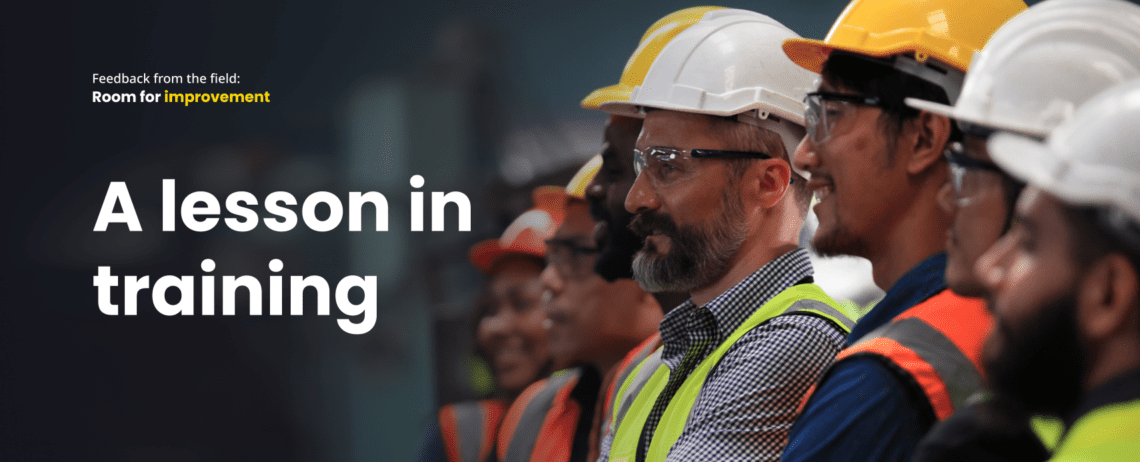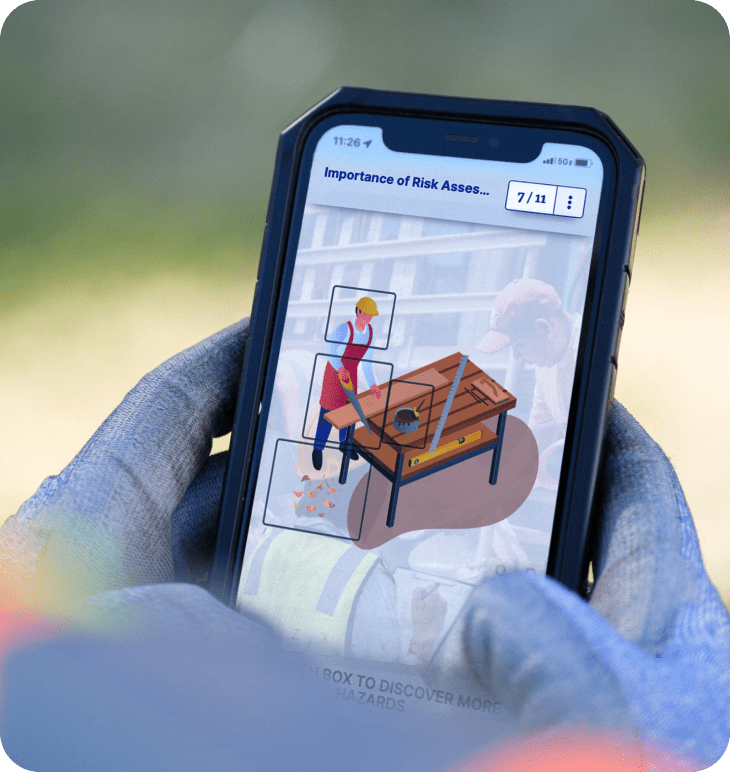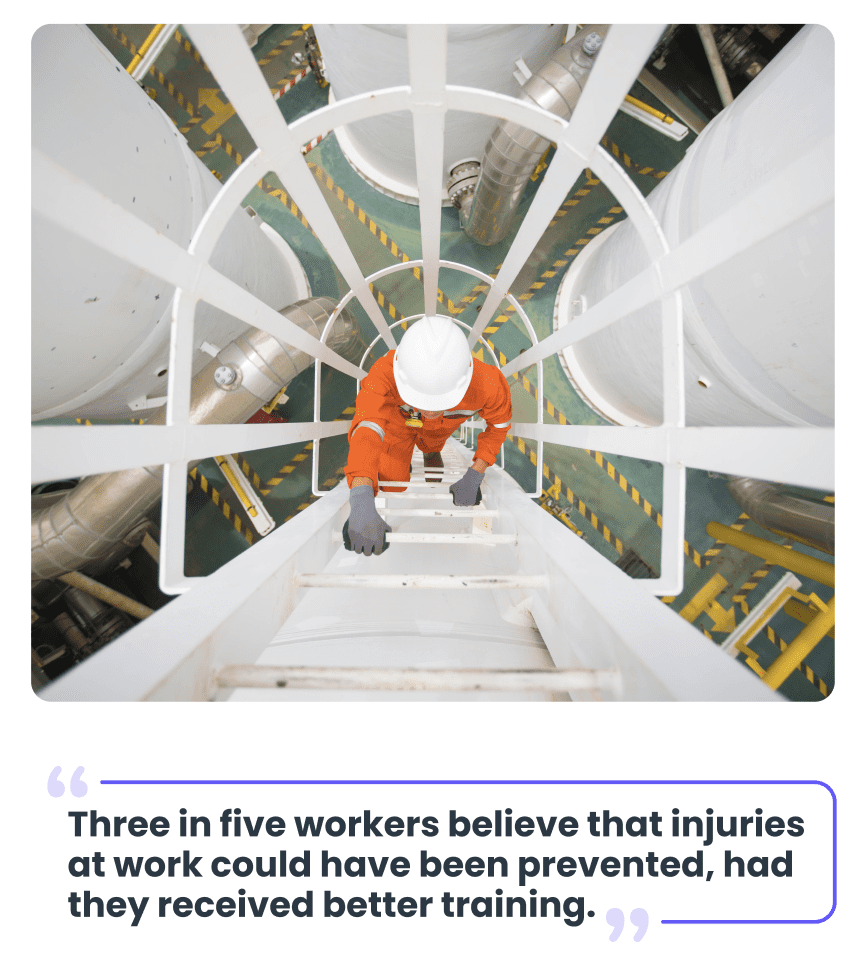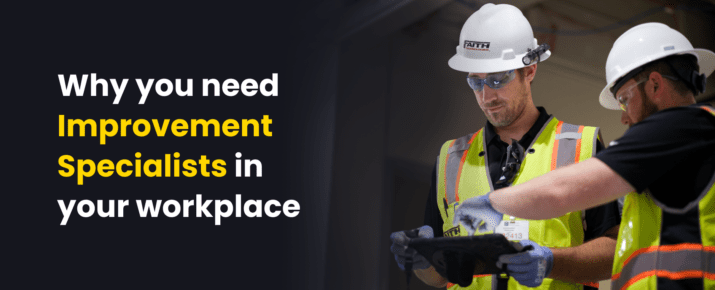Upskilling frontline workers – here’s how to do it right
Feedback From The Field | World Of Work | By | 15 Nov 2023 | 5 minute read

Here’s a fact that’s easily overlooked: Workers want to be good at their jobs. They’re eager to refine skills and access resources that help them succeed in their roles.
It’s up to employers to make those upskilling opportunities available. And unfortunately, that’s where a lot of companies can fall short.
In our recent report ‘Feedback from the Field: Room for Improvement’, conducted in partnership with YouGov, only 25% of workers say they’ve received valuable training from their organization, which helped them improve at their job in the past year or more.
It’s time to stop overlooking frontline training. Here’s why it’s worth it to invest in employee skills as well as a few effective ways to upskill your employees — even if resources are tight.

The undeniable importance of training frontline workers
In our report, 18% of frontline workers say that their organization has never offered training. It’s alarming proof that training frontline workers hasn’t topped the priority list for a lot of organizations.
However, emphasizing frontline education and upskilling offers several compelling benefits that could inspire employers to change their tune.
1. Improve employee retention
Employee retention is an ongoing challenge for all types of companies and industries — and that’s especially true when you look at frontline workers:
- According to McKinsey, 50% of frontline retail workers in the US have considered quitting and leaving the industry entirely.
- There’s an ongoing nursing shortage, with nearly a third of surveyed nurses reporting an intent to leave their current jobs.
- A continuing workforce shortage is one of the biggest challenges currently facing the construction industry.
- In a May 2022 survey, an alarming 77% of frontline supply chain workers admitted they were looking to change jobs over the next three months.
Employers need to hang onto their workers — and investing in their learning and development is an effective way to keep them around. According to an Amazon and Gallup survey, 71% of workers who have participated in upskilling agree or strongly agree that it has enhanced their satisfaction with work.
And happier employees are more likely to stay on board. IBM research shows that new employees are 42% more likely to stay when they receive the training they need to do their jobs properly.
2. Navigate the future of work
The world of work has changed radically — especially in recent years — and changes will only keep coming with advancing technologies, shifting regulations, and evolving priorities.
But employers can’t expect workers to keep up with those changes independently. They need to be given opportunities to advance their skills and knowledge.
These opportunities benefit employees as they adjust to seemingly relentless changes, but if we’re talking bigger picture, they also benefit the entire organization with a more future-ready workforce. According to LinkedIn research, an impressive 89% of learning and development professionals agree that proactively building employee skills for today and tomorrow will help navigate the evolving future of work.
3. Reduce injuries and accidents
Training doesn’t just make your workforce smarter — it keeps them safer, too. Frontline jobs are often physically demanding and potentially risky. Workers need the right equipment, procedures, and training to prevent injuries and accidents.
In our survey, 64% of workers believe that some workplace injuries could have been prevented if they received better training. That includes 10% who say that all injuries were preventable with the right training.

5 effective ways to upskill your employees
Training and learning opportunities are crucial. But this isn’t an area where you can expect workers to take charge. Recent data shows that 49% of employees want to develop their skills, but don’t know where to begin.
As an employer, it’s your responsibility to figure out how to upskill your employees. Offering programs like the HVAC Technician Training program at STVT can empower individuals to upskill and excel in fast-growing fields. With a comprehensive curriculum, such training provides a pathway for workforce entrants and established workers alike to enhance their skills for sustainable careers in HVAC.
Not sure where to get started? Here are five tips for adequate frontline training.
1. Identify skill gaps
Upskilling efforts are most beneficial when they balance the skills employees want to pursue with the organization’s current and upcoming needs. The organization gets improved knowledge and broader skill sets, and employees get skills and expertise that help them advance within the company.
How do you find that match? Formally, it’s called a skills gap analysis. But there’s no need to make things too complex. You can learn a lot through efforts like:
- Host conversations with employees about career development goals
- Conduct employee surveys focused on skills and development
- Engage in discussions with leaders about the needs they see on their own teams
- Review upcoming strategies, projects, and growth plans
- Review analytics to get a clear view of your team’s knowledge gaps or problem areas
Those will help you pinpoint the skills your organization needs as well as the people who are most interested in developing them.
2. Review current training materials
When you know which skills or procedures need more support and training, it’s time to take a closer look at your current training materials — if you have them, that is.
Is that training up-to-date or could it use a refresh? Is it in the right format or would another method be more effective? Is it accessible to the employees who would benefit from it?
Training isn’t a ‘set and forget’ practice. You should review your offerings every six months to a year to ensure they’re still relevant and helpful.
Did you know? You can build training materials in under 60 seconds. Learn about SafetyCulture’s new AI Create.
3. Incentivize learning and development
Employees are hungry for upskilling and growth opportunities — but a little extra nudge certainly doesn’t hurt.
The same research from Amazon and Gallup shows that 57% of workers are extremely interested in participating in training to upgrade their skills or to learn new skills that could help them advance their career. But, when that training is free and workers are paid while doing it? That number jumps to 71% of workers who are interested. It’s a no-brainer, really.
Whether you offer paid training time, detail clear career paths and growth plans, or offer some sort of other reward, providing an incentive can give employees the added push they need to invest in their own upskilling and strengthen their resume for future opportunities.
4. Make training accessible
This one’s simple: The easier training is to access, the more likely employees are to actually do it. They shouldn’t have to jump through hoops and rearrange their schedules to fit in the training they need.
Look for a platform (like SafetyCulture) that makes training accessible on any device and fits into the flow of your team’s work, rather than disrupting it. That ensures that upskilling opportunities feel like a benefit, rather than a distraction.
5. Prioritize frequency
Training and upskilling opportunities shouldn’t be a periodic or sporadic initiative. They should be consistently offered and readily available to employees.
Yet in our recent survey, 25% of workers said the last time they received training was a year or more ago, including 16% who say it was more than two years ago.
This is another area where the right technology can help. With the SafetyCulture platform, you can create training within minutes (rather than months) and integrate those learnings into your normal workflows.
You’ll make upskilling a core element of your culture, rather than an intermittent offering. And you’ll ensure your training keeps pace with changes within your team, company, and overall industry.
Frontline training is a top priority
When organizations invest in training frontline workers, everybody stands to gain. Workers are equipped with the skills and knowledge they need to stay safe and succeed in their roles and employers benefit from a workforce that’s increasingly skilled and eager for advancement.
Remember this: Employees are hungry for upskilling opportunities that fuel their careers. And if they don’t find them within your organization, it won’t be long before they leave and look for them elsewhere.
About the research
All figures, unless otherwise stated, are from YouGov Plc. Total sample size was 2, 057 adults (769 UK, 757 US, 531 Australia). Fieldwork was undertaken during June 2023. The survey was carried out online. The figures have been weighted and are representative of US, UK, and AU frontline workers (aged 18+).
Related content:
- Find out more about SafetyCulture Training
- Download the SafetyCulture platform today
- Feedback from the Field – How to empower frontline workers
Important Notice
The information contained in this article is general in nature and you should consider whether the information is appropriate to your specific needs. Legal and other matters referred to in this article are based on our interpretation of laws existing at the time and should not be relied on in place of professional advice. We are not responsible for the content of any site owned by a third party that may be linked to this article. SafetyCulture disclaims all liability (except for any liability which by law cannot be excluded) for any error, inaccuracy, or omission from the information contained in this article, any site linked to this article, and any loss or damage suffered by any person directly or indirectly through relying on this information.





